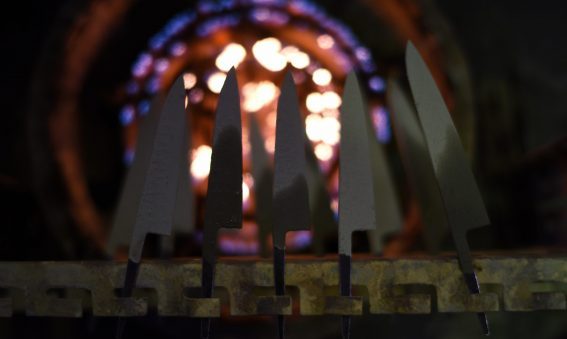Early this year I had honour of Daisuke Kawamura Vice President from Kawamura Hamono visit me in Auckland with a suitcase full of knives. All Knives which he sells under the Sakai Kikomuri brand. He did overwhelm me with choice and I hope I have made a good selection of knives to start selling these knives in New Zealand market.
Kawamura Hamono is founded in 1926 san has been working with Sakai knife smiths and sharpeners ever since. They sell knives all over the world but until recently were not available locally.
I chosen for the Nihonko as an affordable choice for beginners and specialty knives at good price. The knives are carbon steel easy to use and sharpen. I have chosen to get slicers Suhijiki knives, Honesuki knives for boning, This is for professionals who want a good performing knife without breaking the bank.
https://www.kikumori.co.jp/english/product/you/nihon.html
I have selected to get the Kikuzuki Kuro hand forged as a high end choice.
https://choyo.kikumori.co.jp/en/product/p.php?id=28&c=4
The Kiuzuki Kuro is made from white 2 steel, stainless clad hand forged by master blacksmith and finished by mastersharpener. I chose them performance and visual appeal, and the value they offer.
Kawamura Hamono have fulfilled my order quite fast . Delivery of these knives is expected mid November. I have decided to introduce a subscription email to the website to inform customers when new knives are in stock. Personally I am not a fan of monthly newsletters. Many customers have asked me to let them know when I have new stock. This should be a good way to let you know what new knives are available so you don’t miss out. I promise to keep it strictly to announcing new knives and related products in stock.
There is also a nice shipment from Shibata San from iron clad knives, Including new Gekko VGXEOS knives, Masakage Koishi 240 Gyuto’s, Takamura’s, Tsunehisa’s, And yes after 2 Years on order, more Kitaoka 270 Yanigiba’s. And finally Tsunehisa made Western style fish filleting knives. If you prefer your flexible fish filleter now you can purchase them in VG 10 steel!
Also to arrive mid November.
That will make the online shop refreshed and plenty choice now which was lacking before.










